by urban-acupuncture | Aug 10, 2021 | Massage Therapy
Stress Relief
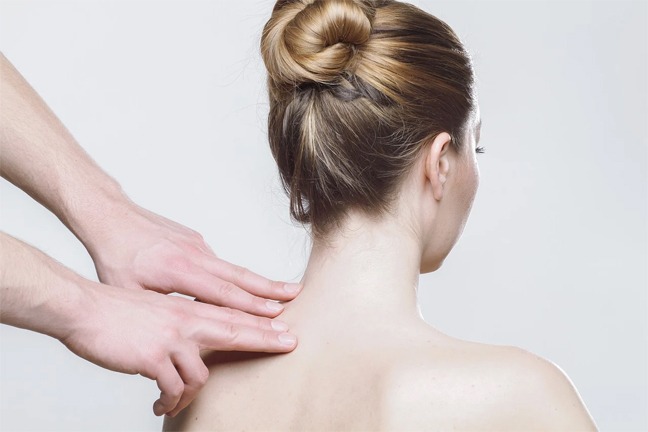 Stress is unavoidable in present times. People of all age groups experience stress at varying levels. Your stress can be physical or mental. Unchecked stress can lead to a lot of health problems. Stress also causes a lot of other problems like anger outbursts, eating disorders, sleeping disorders, burnout, etc. Stress reduces our immunity and leaves us vulnerable to illnesses.
Stress is unavoidable in present times. People of all age groups experience stress at varying levels. Your stress can be physical or mental. Unchecked stress can lead to a lot of health problems. Stress also causes a lot of other problems like anger outbursts, eating disorders, sleeping disorders, burnout, etc. Stress reduces our immunity and leaves us vulnerable to illnesses.
What is the solution to these problems? Visiting a health professional and taking medications to resolve stress is one method of solving this problem. But as we all know, medications can sometimes cause unpleasant side effects, and their effect may be temporary.
Massage Therapy and Stress Relief
Massage therapy can be a safe and effective method for stress relief. It is beneficial for reducing both physical and emotional stress. Regular massages decrease cortisol production in the body. Massage increases the production of feel-good chemicals like dopamine and serotonin.
A good massage session lowers the heart rate, blood pressure, releases feel-good hormones, and enhances relaxation. Massage also leads to the release of natural pain killers. The soothing touch of the therapist interferes with pain signals, preventing them from reaching the brain. A reduction in pain promotes an overall sense of well-being.
Massage also promotes the feeling of caring, comfort, and connection. A good massage in a comfortable setting leaves your mind and body refreshed. Massage therapy improves your health by stimulating the parasympathetic nervous system. This also gives you an emotional response of happiness. The comforting ambiance during massage therapy also contributes to the feeling of relaxation after the massage session.
Stress causes our muscles to tighten. Continuous stress can cause various aches and pains throughout our bodies. Massage therapy relaxes the muscles and sets free any tension present in our muscles. Massage also reduces inflammation in the body. Regular massages increase blood circulation in your body. This directs nutrients and oxygen to all the tissues in your body.
Preparing for a Massage Therapy
Massage Therapy does not require any special preparation. You will need to book a prior appointment for massage therapy. You should avoid consuming any food right before a massage. Inform the therapist if you have any health problems. Let the therapist know if you feel uncomfortable during the massage. Taking some rest after a massage session will help you to absorb the full benefits of the massage.
Getting a Good Massage Therapy
Massage therapies are getting increasingly popular due to the benefits associated with them. It is extremely important to visit a good massage therapist. Only an expert therapist can give you the full benefits associated with massage therapy. Visit Urban Acupuncture Center to get good massage therapy. They have centers in Columbus, Clintonville, Westerville, and Ohio. They offer different types of massage therapies like Swedish Massage, Deep Tissue Massage, Sports Massage, and Neuromuscular massage. Their expert massage therapists help you to select the massage that is most suitable for your body. You can also book an online appointment by visiting their website.
Contact Urban Acupuncture Center in Columbus, OH For More Information
For more information about how acupuncture, massage therapy and other alternative healing treatments can help you, please contact the Urban Acupuncture Center Board Certified Licensed Acupuncturist’s team at Indianola Ave, Clintonville (614) 725-2488 | Main St, Westerville (614) 426-4406 or click here. Taking new patients in and around greater Columbus, Ohio.
by urban-acupuncture | Jul 1, 2021 | Massage Therapy
Joint Pain Treatment with Massage
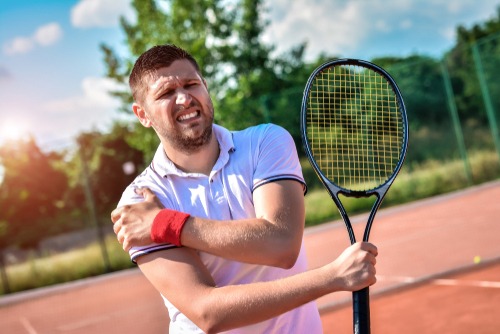 Our lives are getting more and more complex. Stress, a sedentary lifestyle and lack of exercise are making us sick more than ever. These conditions often manifest as body aches and joint paints. But people undermine these conditions, leading to complications in the future. For many, this becomes a life-long medical condition causing utter discomfort.
Our lives are getting more and more complex. Stress, a sedentary lifestyle and lack of exercise are making us sick more than ever. These conditions often manifest as body aches and joint paints. But people undermine these conditions, leading to complications in the future. For many, this becomes a life-long medical condition causing utter discomfort.
Today, medical science offers a wide variety of methods for treating joint pain. Surgery, antibiotics etc. are often projected as the ultimate solution. But they are expensive and have side effects. At this juncture, most people choose massage therapy as the preferred option. If you are looking for neuromuscular massage options in the areas of Columbus, Clintonville, or Westerville in Ohio, check out this blog for more details.
Joint pain causes
Joint pain is the most common muscular ailment present among a large section of the population. In the U.S., around 15 million people suffer from some sort of muscular joint pain. Apart from adults, nowadays it is increasingly seen in children also. It mainly affects the part that joins two bones. In medical terms, any discomfort or ache in these joints is considered as joint pain.
The bone joints at the shoulder, hips, and elbow, in particular, are prone to wear and tear. This can occur due to multiple reasons. Irregular postures, injuries due to sports/exercise, lack of movement etc. are the common causes for muscular tensions. Apart from this, inflammations as a result of certain diseases can lead to joint pains. Bursitis and tendinitis are common examples of this. Arthritis is another major situation that causes acute joint pain in many cases. Early detection and treatment of joint pain is very crucial. Neuromuscular massage is a very effective therapy for joint pain.
Neuromuscular massage therapy for joint pain
Neuromuscular massage is a deep massage technique that is carried out on individual muscular areas. It uses pressure techniques to relax muscular joints that are under strain. Usually, these areas are known as trigger points. Lack of blood flow is a major reason for strain in the area. In neuromuscular massage, varying pressure is applied on the trigger points. Pressure is administered using fingers or elbows. The application of pressure ensures proper blood flow in the strained areas.
Neuromuscular massage is a safe and easy treatment method for joint pain. It can be used for treating all major joint pains such as hip pain, knee pain, and tendonitis. But always make sure to undergo massage treatment with the help of a certified practitioner.
The major benefits of neuromuscular massage are:
- Low cost
- Completely safe without any side effects
- Better blood circulation
- Increase in body flexibility
Conclusion
Neuromuscular massage therapy is becoming very popular in the U.S. But on the other hand, this has led to mushrooming of massage centers. But you should be very careful while selecting the therapy center. Urban Acupuncture Center is a pioneer in providing massage services. This community acupuncture center based out of Ohio provides services in Columbus, Clintonville, and Westerville. It provides the best massage services with a group of professionally trained therapy specialists. So, don’t hesitate, book your appointment today itself.
Contact Urban Acupuncture Center in Columbus, OH For More Information
For more information about how acupuncture, massage therapy and other alternative healing treatments can help you, please contact the Urban Acupuncture Center Board Certified Licensed Acupuncturist’s team at Indianola Ave, Clintonville (614) 725-2488 | Main St, Westerville (614) 426-4406 or click here. Taking new patients in and around greater Columbus, Ohio.
by urban-acupuncture | Jun 1, 2021 | Massage Therapy
Carpal Tunnel Pain Relief
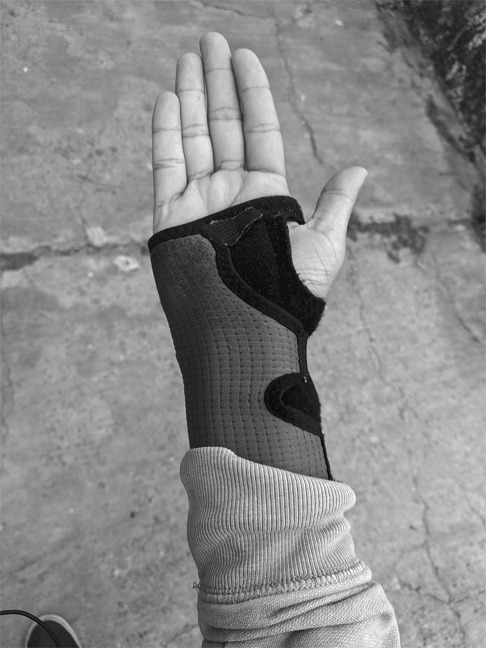 Carpal tunnel disorder is perhaps the most commonly observed nerve disease, affecting between 4 to 10 million Americans. Middle-aged and older generations tend to be affected by this syndrome more than younger people. Women are three times more likely than men to have carpal tunnel syndrome.
Carpal tunnel disorder is perhaps the most commonly observed nerve disease, affecting between 4 to 10 million Americans. Middle-aged and older generations tend to be affected by this syndrome more than younger people. Women are three times more likely than men to have carpal tunnel syndrome.
Your carpal tunnel is located in your wrist on the palm side underneath the surface of your skin. When pressure is applied to your median nerve, it reduces passage of impulses through the nerve. This leads to a feeling of weakness in your hand and loss of hand function.
The symptoms associated with carpal tunnel disorder include burning and numbness in your palm and fingers. You may have difficulty holding things and could experience a shock-like sensation move on your fingers. Your fingers might become numb in the night and the condition could get worse if you are trying to perform an activity with your hand.
Treatment options: Neuromuscular massage therapy
In addition to taking pain medication, neuromuscular massage therapy can help alleviate the pain you experience due to carpal tunnel syndrome. Neuromuscular massage therapy is a type of massage that is performed on individual muscles. By using friction and digital pressure, trigger points causing muscle pain symptoms are released. This improves blood flow and supply of nutrients to your muscles and reduces pain.
Neuromuscular massage therapy is different from deep tissue massage. The latter helps to address muscle aches that occur due to daily stress and is aimed at providing relaxation to a client. On the other hand, neuromuscular massage is a medical treatment where specialized therapy techniques are provided to lessen muscle pain and movement problems. This is achieved by targeting muscle adhesions, connected tissue regions, and trigger points.
Carpal tunnel syndrome is typically caused due to repetitive body movements, pregnancy, and other illnesses like diabetes, obesity, arthritis, etc. Massage can help relieve the symptoms triggering carpal tunnel disorder and offer you relief. Unlike deep tissue massage, neuromuscular massage requires continuous treatment until your pain reduces.
Get help at Urban Acupuncture Center
If you live in Ohio cities Columbus, Clintonville, and Westerville, consider getting your neuromuscular massage treatment done at Urban Acupuncture Center. Our licensed massage therapists represent the best standards in the industry and can help relieve your carpal tunnel problems through consistent treatment. Massage therapy at Urban Acupuncture Center is guaranteed to reduce your pain and offer you a better level of strength and flexibility. You will experience more ease with coordinating your hand movement.
Treatment at our center can also provide a better balance to your central nervous system while improving blood circulation and reducing the level of toxins in your body. With an overall improved body energy level, you can go back to performing routine activities, feeling more positive and energized. If you want more information on getting a neuromuscular massage, contact the Urban Acupuncture Center by phone at (614) 725-2488 (Columbus) or (614) 426-4406. You can also contact us by email at info@urbanacupuncturecenter.org and visit our website at https://urbanacupuncturecenter.org/.
Contact Urban Acupuncture Center in Columbus, OH For More Information
For more information about how acupuncture, massage therapy and other alternative healing treatments can help you, please contact the Urban Acupuncture Center Board Certified Licensed Acupuncturist’s team at Indianola Ave, Clintonville (614) 725-2488 | Main St, Westerville (614) 426-4406 or click here. Taking new patients in and around greater Columbus, Ohio.
by urban-acupuncture | Mar 23, 2021 | Acupuncture, Massage Therapy
Trauma and PTSD Treatment
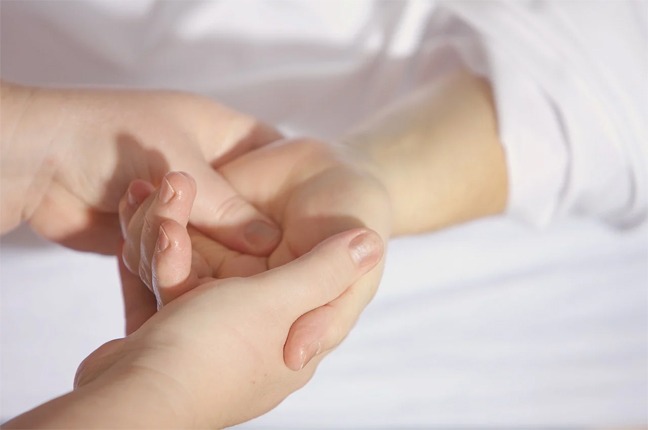 Post-Traumatic Stress Disorder (PTSD) is a complex and serious mental health disorder resulting from a traumatic experience. If left unrecognized and untreated, the symptoms of PTSD can be extremely debilitating. They can interfere with an individual’s ability to work, to maintain relationships, and live a healthy, fulfilling life.
Post-Traumatic Stress Disorder (PTSD) is a complex and serious mental health disorder resulting from a traumatic experience. If left unrecognized and untreated, the symptoms of PTSD can be extremely debilitating. They can interfere with an individual’s ability to work, to maintain relationships, and live a healthy, fulfilling life.
PTSD is rooted in the body’s “fight or flight” instinct. This instinct enables us to react quickly to a traumatic event. The body automatically triggers an appropriate response to danger and then turns that reaction off when the danger is past.
When the trauma is severe or of long duration, however, that “fight or flight” reaction continues even after the danger is past. The inability to shut off the “fight or flight” instinct leads to the symptoms we now associate with PTSD. Just a few of the most common symptoms include:
- Hypersensitivity and hyperawareness
- Anxiety
- Depression
- Irritability and anger
- Insomnia / difficulty sleeping
- Flashbacks and nightmares
- Feelings of isolation and detachment
- Physical pain (not related to a specific physical cause)
Treatment for PTSD usually involves a long-term commitment to psychotherapy, as well as medications if necessary to control some specific symptoms.
Touch therapies such as acupuncture and massage can also play an important role in managing PTSD symptoms and in longer term recovery.
In the short term, massage and acupuncture can help promote relaxation while decreasing feelings of stress, anxiety, and depression. Over the longer term, touch therapy like acupuncture and massage can help individuals with PTSD manage their feelings relating to touch, trust, control, and relationship-building.
Stress-Reducing Benefits of Massage and Acupuncture for PTSD
Both acupuncture and massage are well known for their ability to help minimize stress, anxiety, and depression. This is especially important for individuals with PTSD, for whom these feelings can be overwhelming.
Massage addresses stress that is held in the body as muscle tension. Massage therapy releases this tension by manipulating and kneading those tight muscles. Promoting physical relaxation can reduce body aches and headaches that result from stress and anxiety. And it often leads to an overall positive impact on emotional health and overall well-being.
Acupuncture works differently than massage, but has similar stress-reducing effects that can be highly effective for individuals with PTSD. Acupuncture works by re-balancing the body’s flow of life energy (“qi”). By inserting very thin sterile needles into key points around the body, acupuncture helps stimulate the body’s self-healing mechanisms to reduce feelings of stress, anxiety, and depression.
Touch Therapy Can Help Build Trust for PTSD Patients
Massage and acupuncture can play a critical role in helping to reduce feelings of stress and anxiety, while promoting relaxation, for patients with PTSD.
However, touch therapies like acupuncture and massage can also help individuals with PTSD learn to rebuild trust and control.
In other words, how the therapies are handled can be just as important as the therapy itself.
For many people suffering from PTSD, touch itself can be a triggering event. Over the long term, touch therapy like acupuncture and massage can help these individuals accept physical contact without stimulating the “fight or flight” response.
The key lies in enabling the patient to remain in control throughout each therapy session and to build a relationship of trust with the licensed massage therapist or acupuncturist.
Open communication from the very first consultation through the conclusion of each therapeutic session is absolutely critical to long-term success.
The client must understand what to expect from each session, and trust that he or she can make changes and adaptations throughout each session, even stopping if necessary.
The massage therapist and acupuncturist must listen carefully to the client’s concerns and be willing to adapt their technique in each session to address those concerns.
Like any therapy, massage and acupuncture can help clients with PTSD find relief from their symptoms but success does not happen overnight. It requires a long-term, conservative approach designed to build trust and communication. But in the end, massage and acupuncture can play an integral role in a comprehensive treatment program for PTSD.
Contact Urban Acupuncture Center in Columbus, OH For More Information
For more information about how acupuncture, massage therapy and other alternative healing treatments can help you, please contact the Urban Acupuncture Center Board Certified Licensed Acupuncturist’s team at Indianola Ave, Clintonville (614) 725-2488 | Main St, Westerville (614) 426-4406 or click here. Taking new patients in and around greater Columbus, Ohio.
by urban-acupuncture | Mar 1, 2021 | Acupuncture, Massage Therapy
Managing Chronic Pain
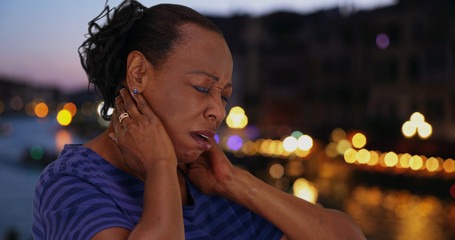 If you are living with chronic pain, you know just how debilitating it can be.
If you are living with chronic pain, you know just how debilitating it can be.
Chronic pain can—and often does—take a serious toll on physical and mental health, lifestyle, and overall wellbeing. Chronic pain can lead to depression, anxiety, and disrupted sleep patterns. It can undermine the ability to work and threaten financial security. And it can interfere with an active social life and even disrupt relationships with family and friends.
Yet chronic pain is often extraordinarily difficult to manage. In fact, chronic pain management continues to be one of the most challenging aspects of medicine today.
Standard treatment for chronic pain today usually revolves around medications. Unfortunately, relying solely on medications can be problematic. Over-the-counter medications such as acetaminophen (Tylenol, etc) and NSAIDs (nonsteroidal anti-inflammatory drugs, ex.: Advil or Motrin) may not be strong enough to be effective in some cases, and can carry risk of potential health concerns with extended use.
And while pharmaceutical opioids such as OxyContin may have seemed like a “miracle drug” for chronic pain in the early 1990s, it is now quite clear that the use of opioids carries significant and serious health risks including the risk of long-term addiction and lethal overdose.
The good news is that alternative pain management therapies are available today.
Acupuncture and massage therapy can both play a highly effective role in pain management, either as stand-alone treatments or, more commonly, as part of a comprehensive pain management program incorporating multiple types of treatment.
Do Acupuncture and Massage Therapy Really Work for Chronic Pain?
An increasing body of scientific literature now indicates that both acupuncture and massage really can help relieve chronic pain for some people.
Both treatment options have been particularly effective in the treatment of lower back pain, headaches and migraines, nerve pain (especially relating to shingles), fibromyalgia, joint pain due to arthritis, and menstrual cramps.
In addition to helping relieve pain and discomfort, both acupuncture and massage have been shown to be highly effective in improving sleep, reducing feelings of depression, anxiety, and stress, and promoting relaxation. These secondary effects may not have an impact on pain reduction in and of themselves. However, they do help promote mental health and well-being, which can play a critical role in improving your overall quality of life.
How to incorporate massage therapy or acupuncture into a pain management program is unique for each patient. For some, regular massage may seem to work “miracles”; for others, acupuncture may provide effective relief. For some, a combination of both may be most effective.
And of course, these treatment options may not work for every patient, or may work only in conjunction with other, more traditional treatments.
Are Acupuncture and Massage Safe for Patients with Chronic Pain?
Massage and acupuncture may not be appropriate for all patients.
For most people, however, both acupuncture and massage may be safely incorporated into a medical and wellness plan. And most medical experts note that unless otherwise prohibited for a specific reason, both massage and acupuncture are worth trying.
Always speak to your physician and pain management specialist about whether massage or acupuncture, or both, might be appropriate for your comprehensive pain management program.
When exploring massage or acupuncture as a pain management option, be sure to choose your practitioner with care. Both your acupuncturist and your massage therapist should be fully licensed and experienced in specific pain management techniques. It’s ok to schedule consultations with multiple therapists to find the one that you feel the most comfortable with.
And it’s important that you are comfortable discussing your health and wellness concerns openly and honestly, before and during each appointment. The more you communicate about your unique situation, goals, and concerns, the most your therapist(s) will be able to effectively tailor your treatments to meet your needs.
Contact Urban Acupuncture Center in Columbus, OH For More Information
For more information about how acupuncture, massage therapy and other alternative healing treatments can help you, please contact the Urban Acupuncture Center Board Certified Licensed Acupuncturist’s team at Indianola Ave, Clintonville (614) 725-2488 or click here. Taking new patients in and around greater Columbus, Ohio.
by urban-acupuncture | Feb 15, 2021 | Acupuncture, Massage Therapy
Diabetes Management Treatments
What is Diabetes?
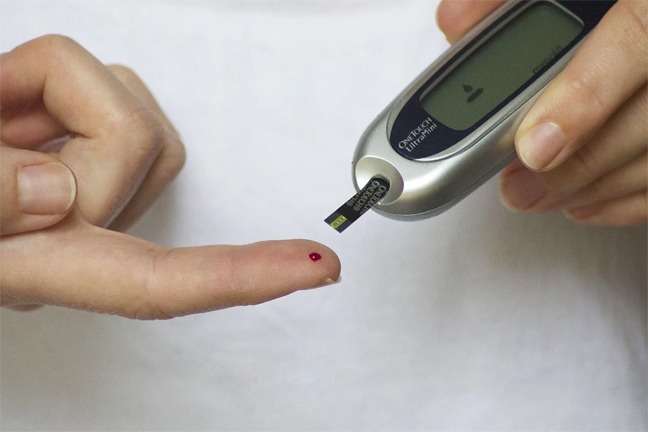 Diabetes is a serious health condition that affects more than 30 million Americans today. It is, unfortunately, a complex, chronic disease that (currently) cannot be cured. And if left untreated, it can lead to serious, even life-threatening, complications.
Diabetes is a serious health condition that affects more than 30 million Americans today. It is, unfortunately, a complex, chronic disease that (currently) cannot be cured. And if left untreated, it can lead to serious, even life-threatening, complications.
Diabetes is the result of a malfunction in the body’s ability to produce or effectively use insulin, a hormone that enables the cells to absorb glucose (sugar) from the food we eat. Without insulin, glucose is unable to enter the cells, causing it to build up in the blood stream, a condition known as high blood sugar.
Treating diabetes requires regulating insulin levels to maintain the correct level of glucose in the blood. Without enough insulin, high blood sugar levels in the blood mean that the cells aren’t receiving any energy; this is known as hyperglycemia. With too much insulin, the amount of sugar in the blood can be too low; this is known as hypoglycemia. Both conditions can be life-threatening.
Frequent monitoring of blood sugar levels in order to maintain the correct balance is the first step in managing diabetes. For some patients, maintaining a low-sugar diet, losing weight, and following a healthy lifestyle can help maintain stable blood sugar levels. For other patients, however, a regime of daily insulin injections is absolutely critical to avoid potentially life-threatening complications.
Even with proper treatment, managing the day-to-day symptoms of diabetes can be challenging. While alternative therapies such as massage and acupuncture cannot replace daily insulin injections and a low-sugar diet, they can be highly effective in helping to cope with some of side effects.
3 Ways Massage Therapy Helps Manage Diabetes Symptoms
Massage can help lower glucose levels.
Massage has been shown to have some positive impact on high blood sugar levels. By helping to promote relaxation and decrease stress, massage can help decrease high levels of glucose, thereby helping to maintain the correct glucose balance needed for good health. By helping to keep glucose levels appropriately low, massage can help avoid the negative side effects of hyperglycemia, such as eye damage, kidney failure, and nerve damage (Neuropathy).
Massage can improve blood flow to the legs.
Massage has shown to be highly effective in helping to maintain proper blood flow to the lower extremities. This is especially important for diabetics prone to Peripheral Arterial Disease (PAD), a very common, and very serious, side effect of diabetes. PAD is the result of decreased blood flow to the feet due to the narrowing and constricting of blood vessels. Blood flow can even become blocked due to fatty deposits. By improving blood flow between the torso and the legs, massage therapy can help reduce the negative consequences of PAD.
Massage can improve flexibility and range of motion in the legs.
Over time, high blood sugar can cause the connective tissue between the muscle and bone to become thick and stiff, limiting mobility. Regular massage can increase mobility and improve flexibility by relaxing and stretching the muscles, tendons, and ligaments. This has the cumulative impact of helping diabetics stay active and maintain a healthy lifestyle, which is a key part of treatment for many patients.
3 Ways Acupuncture Helps Manage Diabetes Symptoms
Acupuncture can address diabetic nerve pain (Neuropathy).
Damage to the nerves (Neuropathy) leading to chronic pain is an all-too-common side effect of diabetes. Acupuncture has been shown to help alleviate diabetic nerve pain; deep stimulation of the nerves along the wrist and the ankle has shown to be particularly effective. Acupuncture can also reduce pain by promoting relaxation and stimulating the production of endorphins.
Acupuncture can help with weight loss and metabolism.
For patients with Type 2, or insulin-dependent diabetes, weight loss can be an excellent way to help the body regulate its own production and use of insulin. Along with a healthy diet and moderate exercise, acupuncture can help promote weight loss. Acupuncture restores the body’s natural balance, which can enable the body to naturally regulate metabolic function and assist weight loss.
Acupuncture can assist in the regulation of blood sugar levels.
Like massage therapy, acupuncture can help decrease the level of glucose in the blood by promoting relaxation and combatting stress. It is believed that by regulating levels of cortisol, also known as the stress hormone, acupuncture helps reduce stress, which in turn can reduce high blood sugar.
Generally speaking, both acupuncture and massage are believed to be safe options for people coping with diabetes. However, both massage and acupuncture do carry some risks, so it’s important to check in with your primary care provider to make sure these treatment options are safe and appropriate for you.
And as always, following your doctor’s instructions in terms of blood sugar monitoring, insulin injections, and diet and lifestyle should always be your first treatment priority.
Contact Urban Acupuncture Center in Columbus, OH For More Information
For more information about how acupuncture, massage therapy and other alternative healing treatments can help you, please contact the Urban Acupuncture Center Board Certified Licensed Acupuncturist’s team at Indianola Ave, Clintonville (614) 725-2488 | Main St, Westerville (614) 426-4406 or click here. Taking new patients in and around greater Columbus, Ohio.
 Stress is unavoidable in present times. People of all age groups experience stress at varying levels. Your stress can be physical or mental. Unchecked stress can lead to a lot of health problems. Stress also causes a lot of other problems like anger outbursts, eating disorders, sleeping disorders, burnout, etc. Stress reduces our immunity and leaves us vulnerable to illnesses.
Stress is unavoidable in present times. People of all age groups experience stress at varying levels. Your stress can be physical or mental. Unchecked stress can lead to a lot of health problems. Stress also causes a lot of other problems like anger outbursts, eating disorders, sleeping disorders, burnout, etc. Stress reduces our immunity and leaves us vulnerable to illnesses.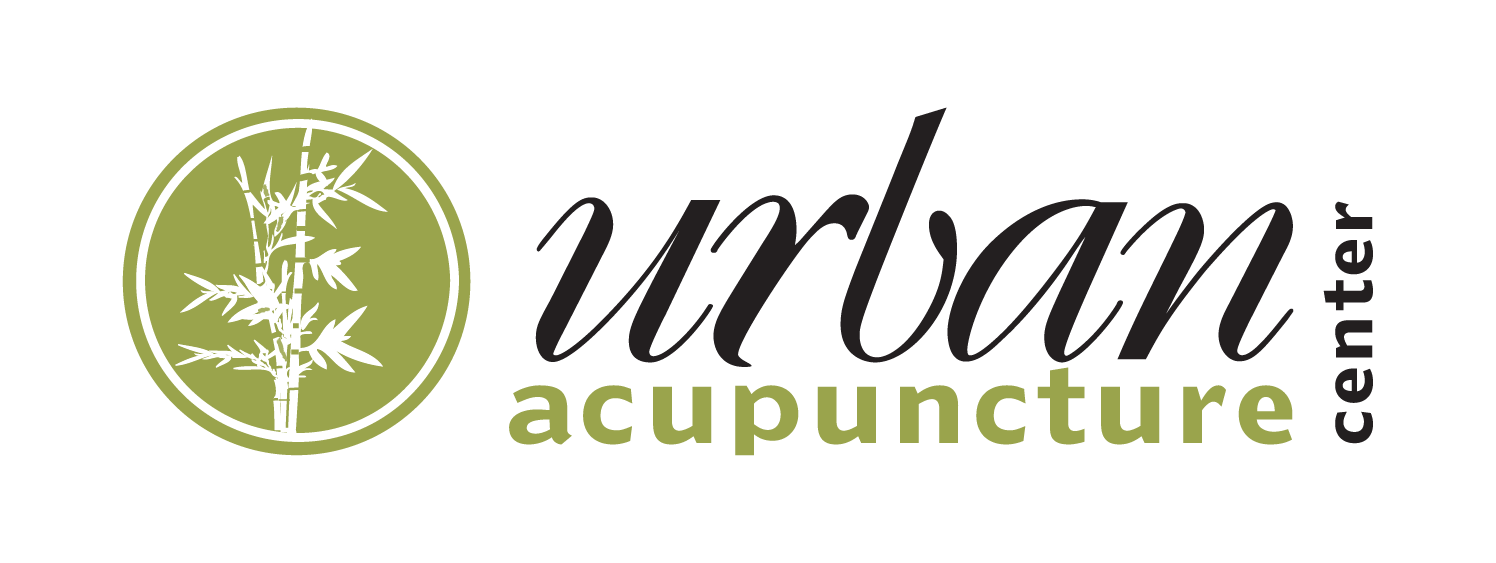
 Our lives are getting more and more complex. Stress, a sedentary lifestyle and lack of exercise are making us sick more than ever. These conditions often manifest as body aches and joint paints. But people undermine these conditions, leading to complications in the future. For many, this becomes a life-long medical condition causing utter discomfort.
Our lives are getting more and more complex. Stress, a sedentary lifestyle and lack of exercise are making us sick more than ever. These conditions often manifest as body aches and joint paints. But people undermine these conditions, leading to complications in the future. For many, this becomes a life-long medical condition causing utter discomfort. Carpal tunnel disorder is perhaps the most commonly observed nerve disease, affecting between 4 to 10 million Americans. Middle-aged and older generations tend to be affected by this syndrome more than younger people. Women are three times more likely than men to have carpal tunnel syndrome.
Carpal tunnel disorder is perhaps the most commonly observed nerve disease, affecting between 4 to 10 million Americans. Middle-aged and older generations tend to be affected by this syndrome more than younger people. Women are three times more likely than men to have carpal tunnel syndrome. Post-Traumatic Stress Disorder (PTSD) is a complex and serious mental health disorder resulting from a traumatic experience. If left unrecognized and untreated, the symptoms of PTSD can be extremely debilitating. They can interfere with an individual’s ability to work, to maintain relationships, and live a healthy, fulfilling life.
Post-Traumatic Stress Disorder (PTSD) is a complex and serious mental health disorder resulting from a traumatic experience. If left unrecognized and untreated, the symptoms of PTSD can be extremely debilitating. They can interfere with an individual’s ability to work, to maintain relationships, and live a healthy, fulfilling life. If you are living with chronic pain, you know just how debilitating it can be.
If you are living with chronic pain, you know just how debilitating it can be. Diabetes is a serious health condition that affects more than 30 million Americans today. It is, unfortunately, a complex, chronic disease that (currently) cannot be cured. And if left untreated, it can lead to serious, even life-threatening, complications.
Diabetes is a serious health condition that affects more than 30 million Americans today. It is, unfortunately, a complex, chronic disease that (currently) cannot be cured. And if left untreated, it can lead to serious, even life-threatening, complications.